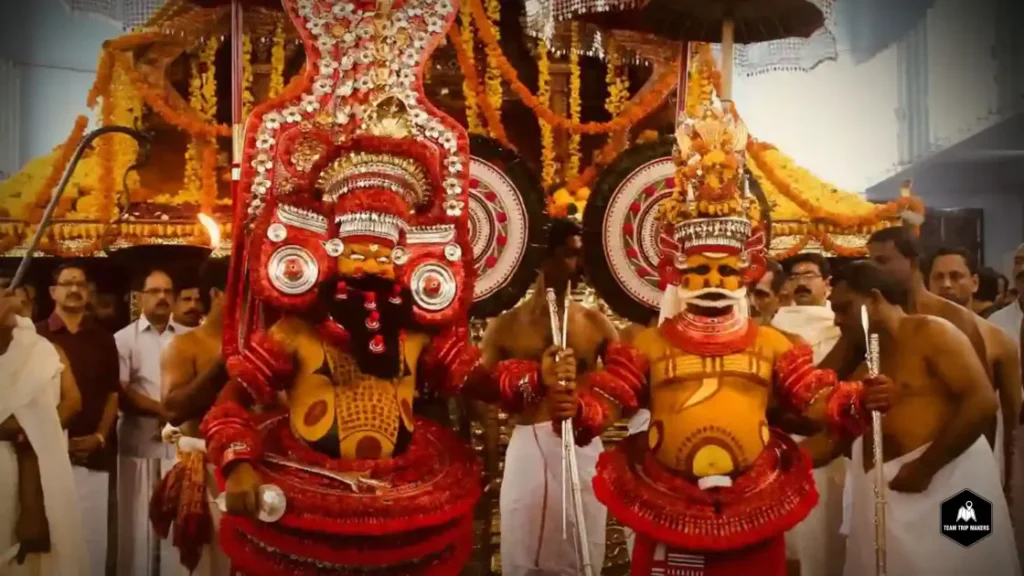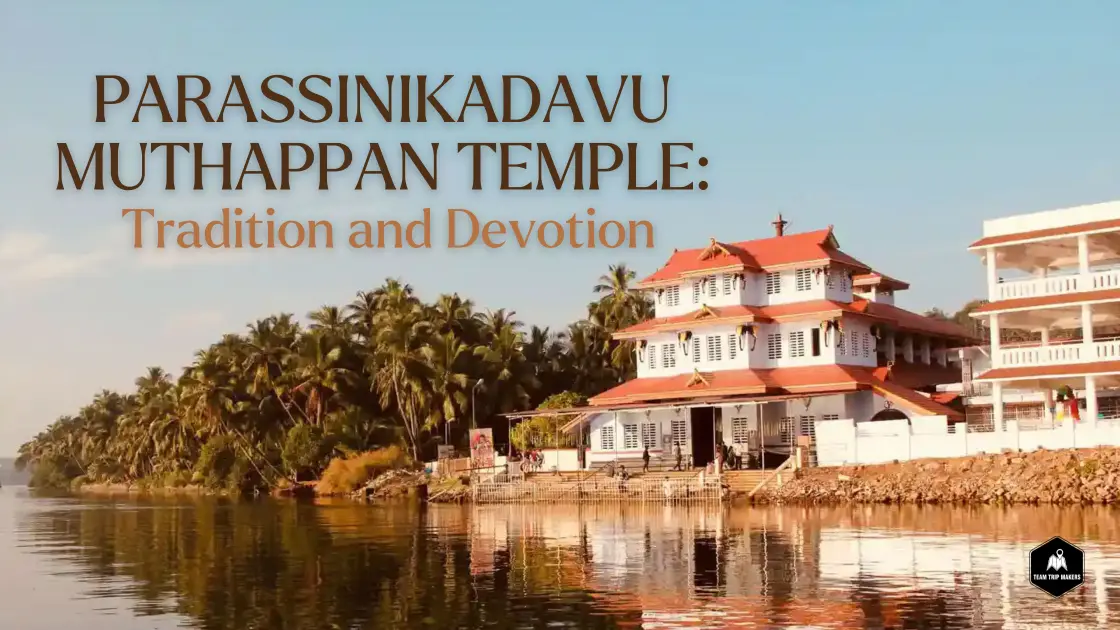Overview
Situated on the banks of the Valapattanam River, the Parassinikadavu Muthappan Temple, also known as the Parassini Madappura Sree Muthappan Temple, draws visitors from all walks of life, regardless of caste or religion, to the Kannur district. One of the fascinating things to note is that since dogs are Lord Muthappan’s vehicle, they are revered here. Among the holiest pilgrimages in north Kerala, the temple offers free lodging and meals to all guests. As a form of devotion, the devotees receive tea and boiled black beans (devotional offering).
Discover beautiful tourist places
Parassinikadavu Muthappan temple is situated in Kannur District, roughly 10 kilometers from Thaliparamba. Sree Muthappan, the personification of two gods—Thruvappana, or Lord Vishnu, and Vellatom, or Lord Shiva—is the deity worshipped in this temple. It is said that he spent his entire life fighting for the rights of the oppressed and abandoned. Muthappan Theyyam, a traditional dance, is the best way to depict his life. The traditional offerings to Muthappan are fish and toddy, which are given out here. Theyyam, a ritualistic art form performed daily at the temple, is another reason for its fame.
Discover the Hidden Gem of Posadi Gumpe
About Muthappan Temple
Vellattom is a scaled-down version of the ritual enactment in which all actions, including speech (vaaythari) and dance (attam), are maximized and at their peak due to the minimal ornaments, decorations, and paraphernalia. Vellattom is on par with an idol placed in a temple sanctum according to sathwic sasthra and vedic rituals, excluding the Prabha-mandala that surrounds it. This is because of the level of enactment that distinguishes it from the idol alone. The Seeveli ceremony, which features a small idol perched atop an elephant, serves as a simpler illustration.

However, Thiruvappana is the complete version, featuring larger prabhamandalam dimensions and royal regalia. The action is slow and minimal and the uriyaadal (answers to prayers) will be precise, succinct, and precise because there are more decorations and they are binding in nature. In comparison, Thiruvappana is comparable to the temple idol surrounded by the Prabha-mandala, which symbolizes the auric circle, and the Seeveli, which has the large Swarna-Kolam covering the small idol atop the elephant.
Muthappan is regarded as Lord Shiva himself in the form of a Nayattu (hunter). The initial manifestation of Vellattam is Siva in the aforementioned minimal form. However, the Vellattom that is associated with the grand Thiruvappana of Muthappan, later on, is a simplified form of Vishnu, who in mythology helps Siva when he begins traveling with the poykannu (blindfold) and begins to experience severe difficulties in getting around and going on food hunts.
Muzhappilangad Beach: India’s Best Drive-in Beach
The Parassinikadavu Muthappan temple rituals are distinct from those of other Hindu temples in Kerala in that they do not adhere to the Satvic Brahminical style of worship. The primary form of worship involves the ceremonial performance of both Muthappan versions using the Muthappan Theyyam, a traditional dance. Toddy, meat, and fish are the typical offerings made to Muthappan. The main celebration of the Parassinikadavu Muthappan temple is Muthappan Thiruvoppana Mahothsavam, which is observed for three days on March 3, 4, and 5 each year, on the 19th, 20th, and 21st of Kumbham.
Rituals and Festivals in Parassinikadavu Muthappan Temple
Every day in the early morning and evening, the ritualistic enactment of the minimal and maxima versions of Sree Muthappan, Thiruvappana, and Vellattam is carried out. The Puthari Thiruvappana festival is held on December 1st or 2nd in Malayalam or 16 Vrichikam. It is the first Thiruvappana of the temple year. It is connected to the region’s harvest season. Every year on 30 Kanni, the temple celebrates its final Thiruvappana.
Getting there
The nearest railway station: Kannur, about 20 km away
Nearest airport: Kannur International Airport, about 35 km | Calicut International Airport, Kozhikode, about 136 km



